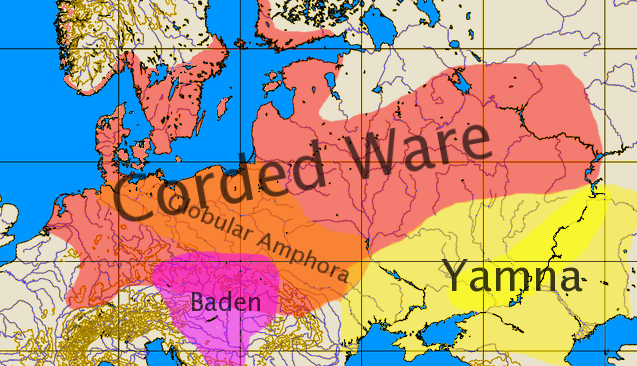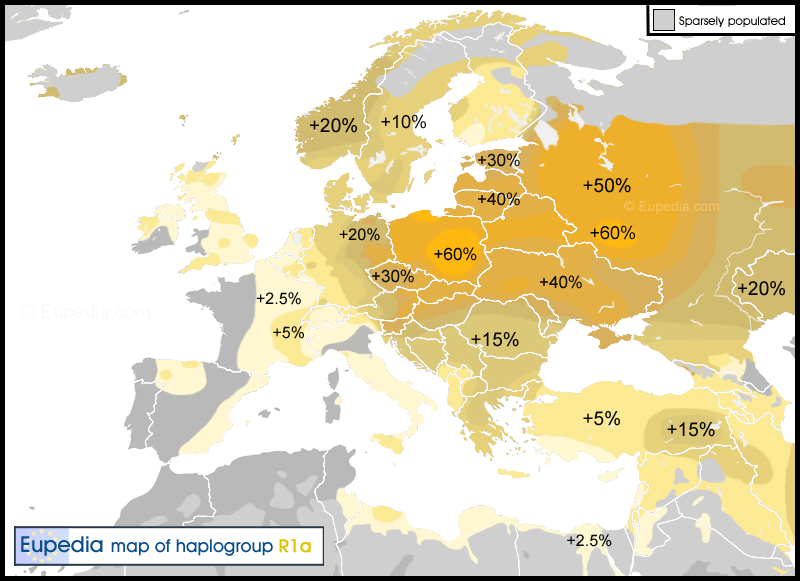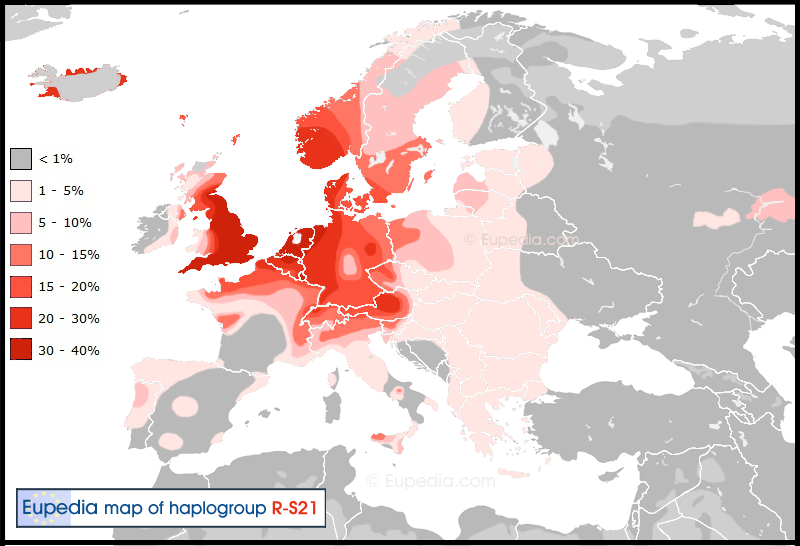mihaitzateo
Regular Member
- Messages
- 943
- Reaction score
- 98
- Points
- 0
- Location
- Bucharest
- Ethnic group
- Romanian
- Y-DNA haplogroup
- proly R1B
I did not said that those thracians were ancestors of all norwegians I said they were carrying those R1a1 norse branches.
Go check a little that pdf with what David Faux is suposing,with the central origins of some of the vikings.
It is pretty clear that other vikings were bearing some branches of N,on paternal line (like Rurik had),very likely others were bearing I1.But nothing supports the theory that vikings were bearing some branches of R1B,on paternal line.
You are making things much more simple than they are in fact.
Take for example I1,there are more branches of I1,same happens with R1a - R1a1 is a branch of R1a.
Now R1a1 have a lot of sub-branches,which includes different kind of branches found in different slavs,the norse vikings,some germans - everyone with different branches.
Most I1 from Norway is not same with most I1 from Sweden,as a example,are different branches of I1.
Ok now if you call the greatest poet of Iceland someone who "invented" things,that is something which I will not comment.
I guess than Carol Lundius also invented a lot of things.And Rasmus Rask,a well known danish scholar and philologist who showed pretty clear that icelandic comes from thracian language,with lots of evidences,was also wrong.
And so on.
As for proto-germans bearing branches of R1B,I am not that sure.This seems asociated pretty clear with celts and latin populations.
Also if some tribes ruled a country for some period of time,that does not means that those tribes are from that country/geographical area.
This is what I was wondering,if dacians did not actually came from south Sweden to rule Dacia,and they gave this name to the land.Because it seems that the ancient population here was bearing mostly I2 .
What remained are the figures from sculptures,but it seems no one want to make a little effort to study them.
In case you did not knew,the thracian language is considered to be one of the proto-indo-european languages.
Go check a little that pdf with what David Faux is suposing,with the central origins of some of the vikings.
It is pretty clear that other vikings were bearing some branches of N,on paternal line (like Rurik had),very likely others were bearing I1.But nothing supports the theory that vikings were bearing some branches of R1B,on paternal line.
You are making things much more simple than they are in fact.
Take for example I1,there are more branches of I1,same happens with R1a - R1a1 is a branch of R1a.
Now R1a1 have a lot of sub-branches,which includes different kind of branches found in different slavs,the norse vikings,some germans - everyone with different branches.
Most I1 from Norway is not same with most I1 from Sweden,as a example,are different branches of I1.
Ok now if you call the greatest poet of Iceland someone who "invented" things,that is something which I will not comment.
I guess than Carol Lundius also invented a lot of things.And Rasmus Rask,a well known danish scholar and philologist who showed pretty clear that icelandic comes from thracian language,with lots of evidences,was also wrong.
And so on.
As for proto-germans bearing branches of R1B,I am not that sure.This seems asociated pretty clear with celts and latin populations.
Also if some tribes ruled a country for some period of time,that does not means that those tribes are from that country/geographical area.
This is what I was wondering,if dacians did not actually came from south Sweden to rule Dacia,and they gave this name to the land.Because it seems that the ancient population here was bearing mostly I2 .
What remained are the figures from sculptures,but it seems no one want to make a little effort to study them.
In case you did not knew,the thracian language is considered to be one of the proto-indo-european languages.




